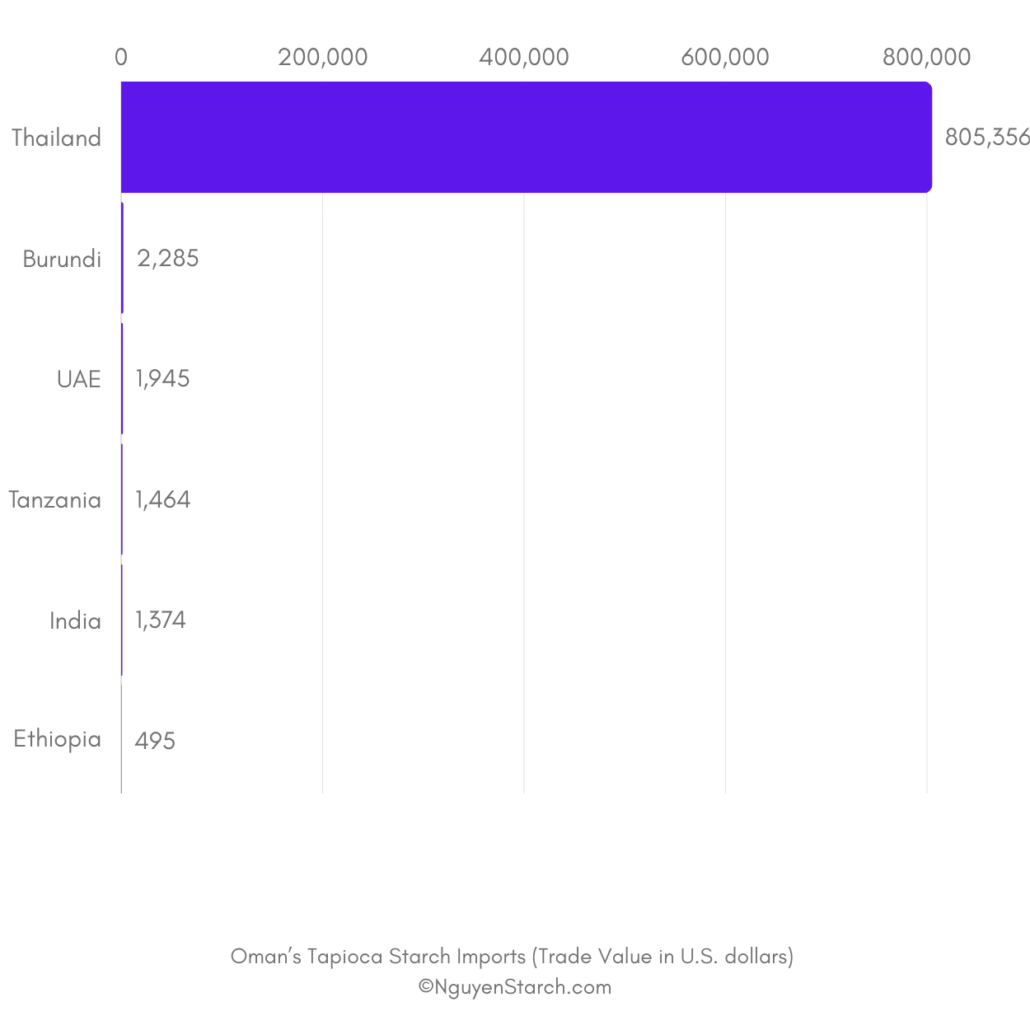Oman, a key player in the global tapioca starch market, has experienced notable developments in both its export and import activities.
Exports
In 2021, Oman recorded tapioca starch exports worth $520, positioning the country as the 89th largest exporter of this product globally. Tapioca starch ranked as the 3221st most exported commodity in Oman during the same year. The United Arab Emirates served as the primary destination for Oman’s tapioca starch exports, accounting for the entire export value of $520.
Oman witnessed moderate growth in its export market for tapioca starch between the previous year and 2021, primarily driven by exports to the United Arab Emirates.
Imports
In 2021, Oman imported tapioca starch worth $813k, positioning the country as the 52nd largest importer of this product globally. Tapioca starch ranked as the 1922nd most imported commodity in Oman during the same year. Oman primarily imports tapioca starch from Thailand, representing the majority of imports at $805k. Additionally, the country sources smaller quantities from Burundi ($2.29k), the United Arab Emirates ($1.95k), Tanzania ($1.46k), and India ($1.37k).

Oman’s import market for tapioca starch demonstrated significant growth between 2020 and 2021, primarily driven by increased imports from Thailand, contributing $799k. Notable growth was also observed in imports from India ($1.37k) and Ethiopia ($481).
| Continent | Country | Trade Value |
| Africa | Burundi | 2,285 |
| Africa | Ethiopia | 495 |
| Africa | Tanzania | 1,464 |
| Asia | United Arab Emirates | 1,945 |
| Asia | India | 1,374 |
| Asia | Thailand | 805,356 |
Tariffs
In 2018, the average tariff imposed on tapioca starch imports in Oman stood at 4.79%. Notably, Angola, Burundi, Benin, Burkina Faso, and Botswana implemented the highest import tariffs on tapioca starch, with a Most Favoured Nation duty rate treatment of 5%. These tariffs reflect the trade policies and protective measures enforced by these countries to regulate the inflow of tapioca starch imports.
Conclusion
Oman’s involvement in the tapioca starch trade highlights its active participation in the global market. The country has experienced moderate growth in its export market, with the United Arab Emirates as the primary destination for its tapioca starch exports. Meanwhile, Oman’s import market heavily relies on Thailand for its tapioca starch supply, while also sourcing smaller quantities from other countries. As trade policies and tariffs continue to shape the industry, stakeholders in the tapioca starch trade must remain attentive to evolving market dynamics to capitalize on opportunities and navigate challenges effectively in Oman’s dynamic market environment.
Data from BACI
